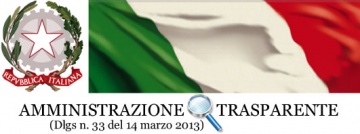The ribbon-like organization of the Golgi apparatus: a view from deep time - Francesco Ferraro, Stazione Zoologica Anton Dohrn, Napoli
Abstract: The “ribbon” is a configuration of the Golgi complex in which its functional units, the stacks, link with each other into a centralized structure; for decades, the ribbon has been considered typical of vertebrate cells. Notwithstanding that Golgi fragmentation, and therefore ribbon disruption, is a morphological hallmark of several human pathologies, therefore hinting at the functional importance this Golgi architecture, the activities it mediates are yet to be identified. Recently, we surveyed the structural organization of the Golgi apparatus in extant animal taxa to infer the evolutionary origins of the ribbon configuration. We found that a ribbon-like Golgi architecture, far from being restricted to the vertebrate lineage, is present in the cells of cnidarians and bilaterians, indicating its emergence their pre-Cambrian common ancestor. Based on this chronology and supported by structural modelling, we propose that evolution of novel interactions between the tethering factors GRASP and golgins may have brought about the emergence of the ribbon-like architecture. Having observed that the ribbon forms during embryogenesis and that this process is conserved from sea urchins to mammals, we also propose that the ribbon-like Golgi plays a - possibly ancestral - role in development. In conclusion, the ribbon-like Golgi organization is a cellular feature widely conserved across animal phyla: an indication that it must play important roles, yet to be discovered, in the cellular physiology of complex animals.
Biography: After training as a biochemist, during my post-doctoral appointments at the Neuroscience Department - UConn Health Center (USA) and the MRC Laboratory for Molecular Cell Biology (LMCB) - University College London (UK) I studied the cell biology of the regulated secretory pathway. I am particularly interested on the functional role of the structure/size of organelles. At present, my focus is on the arrangement of the Golgi complex known as the "ribbon". Originally described by Camillo Golgi in the neurons of vertebrates, the Golgi ribbon is believed to be restricted to the cells of this chordate sub-phylum. In 2014, I identified a functional role for the Golgi ribbon in determining the size of the Weibel-Palade bodies, which are endothelial specific secretory granules. I also established that the size of Weibel-Palade bodies impacts the haemostatic activity of their main cargo: von Willebrand Factor. After joining the Stazione Zoologica Anton Dohrn, I coordinated a large collaborative work resulting in the discovery (or, more correctly, the rediscovery) that, contrary to the current consensus, the ribbon-like Golgi organization is widespread across animal phyla, indicating its ancient emergence in the metazoan lineage. The biological reasons why animal cells organize their Golgi complexes into the ribbon configuration remain unclear. The goal of my current research is to deduce the identity of the molecular effectors that mediated the evolution of the ribbon-like Golgi configuration and, by taking advantage of nonvertebrate animal models, identify its functions.



